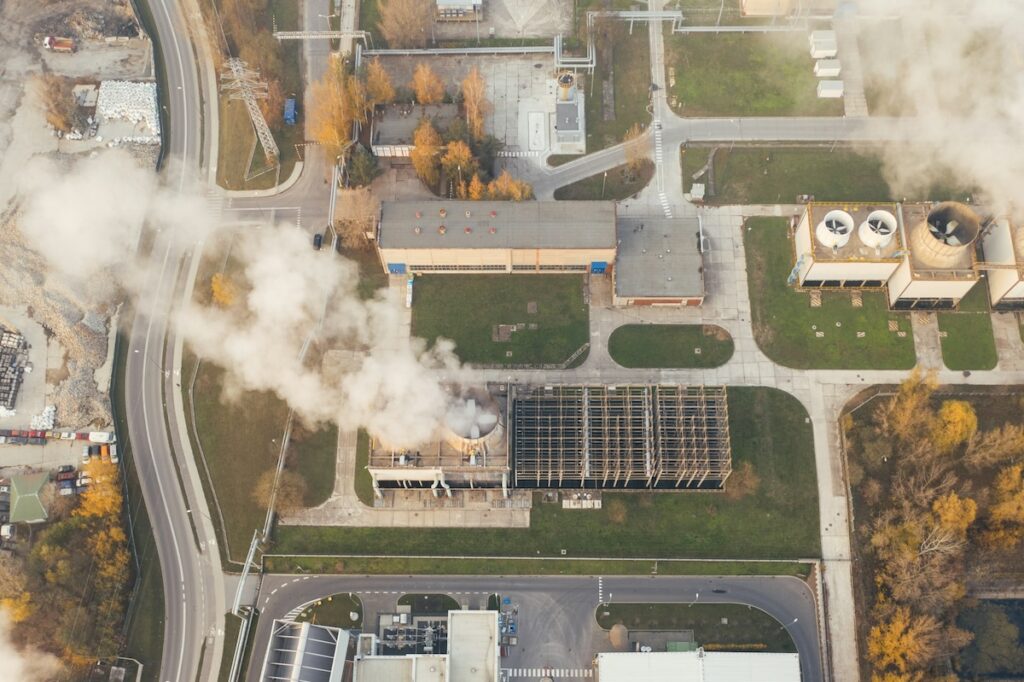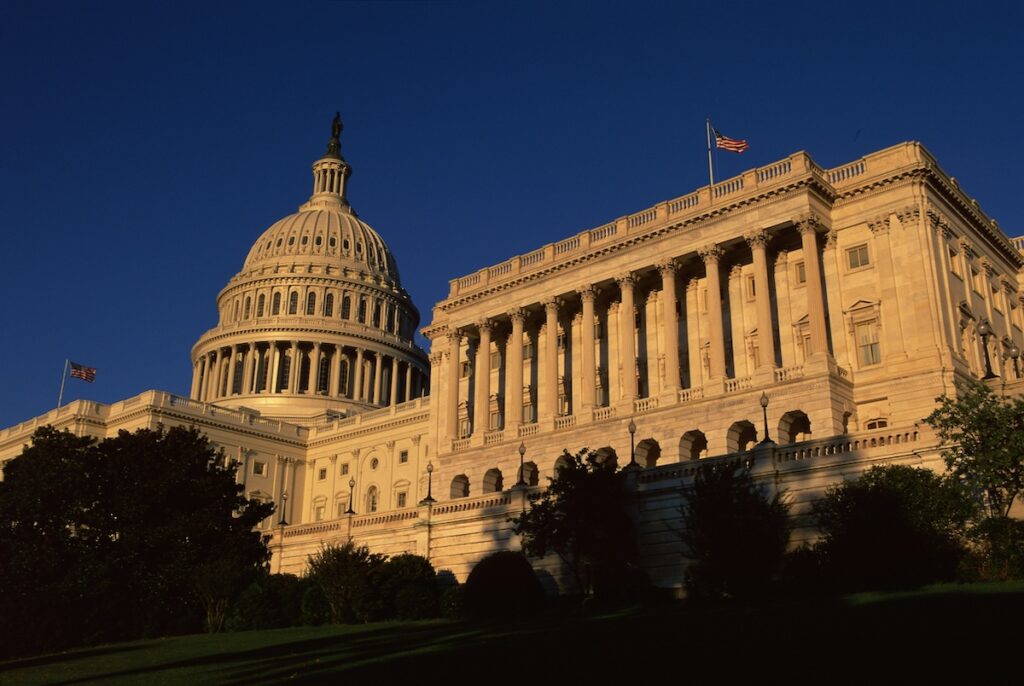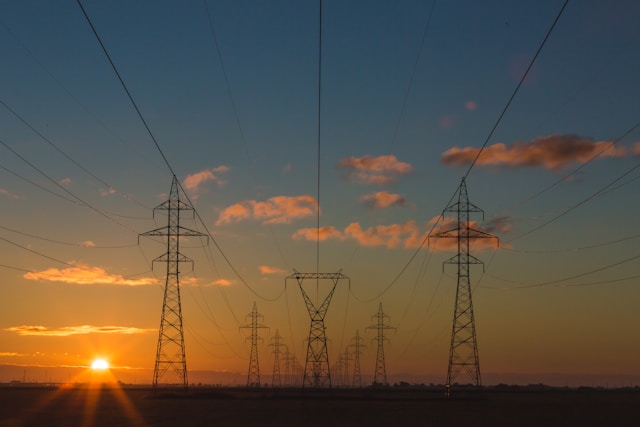
Nuclear energy: a critical pathway to America’s net zero ambitions
The global battle against climate change demands transformative energy solutions capable of balancing sustainability, reliability, and scalability. As nations worldwide strive to meet ambitious decarbonisation targets, the United States finds itself at a crossroads, requiring bold and innovative approaches to reduce greenhouse gas emissions while sustaining economic growth and energy security. Nuclear energy, often overshadowed by wind and solar in clean energy discussions, emerges as a critical component of a future energy mix that prioritises both environmental and operational imperatives.
Unlike renewable energy sources such as wind and solar, which depend on weather conditions, nuclear power provides consistent, large-scale electricity generation regardless of external factors. This reliability, coupled with its low-carbon footprint, makes nuclear energy a uniquely valuable player in the energy transition. With the Biden administration setting ambitious goals—achieving a 100% carbon-pollution-free electricity sector by 2035 and a net-zero emissions economy by 2050—the stage is set for nuclear energy to play a transformative role. Meeting these targets requires not incremental progress but a fundamental reimagining of America’s energy infrastructure, positioning nuclear energy as a cornerstone of the nation’s clean energy strategy.
In addition to looking at net zero, there are now new considerations also to take into account, making nuclear a viable, long term candidate for energy production: sovereignty as conflicts complicate the access to abundant fossil fuel, stable base load with an increasing demand with new use cases such as AI data centres, grid stability for developed countries with established electricity grids.
Nuclear energy’s carbon reduction potential
Emissions comparative analysis
One of the most compelling arguments for nuclear energy is its unparalleled carbon efficiency. The process of nuclear fission produces almost no direct carbon emissions, making it one of the cleanest energy sources available today. According to the Intergovernmental Panel on Climate Change (IPCC), nuclear energy generates approximately 12 grams of CO2 equivalent per kilowatt-hour (kWh) of electricity produced. This places it among the lowest-emission technologies, comparable to wind energy and significantly outperforming solar photovoltaic systems (48 g CO2e/kWh). By contrast, fossil fuels like coal and natural gas emit 820 g CO2e/kWh and 490 g CO2e/kWh, respectively.
The stark difference in emissions highlights the transformative potential of nuclear energy to mitigate climate change. Transitioning from coal and natural gas to nuclear can lead to a dramatic reduction in carbon emissions, addressing a significant portion of the global carbon footprint attributed to electricity generation. These figures underscore the urgency of integrating nuclear power more prominently into the U.S. energy mix to meet net-zero objectives.

Current contribution to clean energy
Despite its low profile in mainstream energy discussions, nuclear power already plays a pivotal role in the United States’ clean energy landscape. Currently, nuclear power provides approximately 20% of the country’s total electricity supply and nearly half of its carbon-free electricity. This means nuclear energy is already reducing carbon emissions on a massive scale. For instance, a single nuclear power plant can prevent millions of metric tons of CO2 from entering the atmosphere annually. This contribution is equivalent to removing millions of cars from the road or displacing thousands of coal-fired power plants, demonstrating nuclear energy’s outsized impact in the clean energy transition.
However, to unlock its full potential, the current capacity of nuclear energy must expand significantly. Maintaining and modernising existing reactors, alongside constructing new advanced facilities, will be essential to scaling this impact and achieving the ambitious decarbonisation goals set forth by the Biden administration.
Lifecycle carbon footprint
While critics of nuclear energy often cite the environmental costs of uranium mining, enrichment, and plant construction, comprehensive lifecycle analyses reveal that these processes contribute minimally to nuclear energy’s overall carbon footprint. Over the full lifecycle, nuclear energy emits less carbon per unit of electricity than even solar photovoltaic systems. Moreover, advancements in mining technologies such as uranium extraction from seawater and reactor design have further reduced the carbon intensity of these upstream processes. Innovations such as modular construction techniques also streamline plant construction, minimizing emissions while accelerating deployment.
Technological innovations driving nuclear’s clean energy promise
Small Modular Reactors (SMRs): a technological revolution
Small Modular Reactors (SMRs) are redefining the possibilities of nuclear energy. Unlike traditional large-scale reactors, SMRs are designed for modularity and scalability, making them more adaptable to various energy needs. Factory-assembled components allow for shorter construction timelines and reduced on-site complexity, significantly lowering the financial and logistical barriers to deployment.
The potential applications of SMRs extend far beyond grid electricity. Their compact design makes them ideal for remote locations, industrial facilities, and even integration with renewable energy systems in hybrid configurations. Enhanced safety features, such as passive cooling systems, provide an additional layer of reliability, addressing longstanding public concerns about nuclear safety. Companies like NuScale Power are already pioneering SMR technologies, with several designs expected to achieve commercial deployment within the next decade. These reactors promise to democratize access to nuclear energy, bringing clean, reliable power to communities previously underserved by large-scale infrastructure.
Advanced reactor designs
The future of nuclear energy is not confined to GenIII SMRs. Emerging reactor technologies are pushing the boundaries of efficiency, safety, and sustainability. Among these innovations are:
- Molten Salt Reactors (MSRs): These reactors use liquid fuel and operate at low pressures, reducing the risk of accidents and improving thermal efficiency.
- High-Temperature Gas-Cooled Reactors (HTGRs): These reactors can achieve extremely high operating temperatures, making them suitable for industrial applications such as hydrogen production.
- Fast Neutron Reactors: Capable of utilizing spent nuclear fuel, these reactors address waste management challenges while extracting additional energy from nuclear materials.
These advancements promise to overcome many of the limitations associated with traditional nuclear technology, broadening the scope of nuclear energy’s applicability in a low-carbon future.
Waste management and recycling innovations
Nuclear waste management remains one of the industry’s most visible challenges. However, new technologies are transforming this narrative by reducing waste volumes, improving recycling processes, and developing long-term storage solutions. For instance:
- Advanced fuel recycling technologies enable the recovery of usable materials from spent fuel, reducing the volume of high-level waste.
- Geological Disposal Facilities (GDF), such as Finland’s Onkalo repository, provide secure, permanent storage for radioactive materials.
- Fast neutron reactors offer the potential to recycle spent fuel directly, turning waste into an asset while minimizing its long-term environmental impact.
These innovations not only address public concerns but also enhance the sustainability of nuclear energy as a long-term solution to climate change.
Policy landscape and government support
Federal initiatives and investments
The federal government is playing a critical role in revitalizing the nuclear sector. Initiatives under the Inflation Reduction Act (IRA) include tax credits for existing nuclear facilities, grants for research into advanced reactor technologies, and funding for the extension of reactor lifespans. These measures signal a strong commitment to nuclear energy as an integral part of the clean energy transition.
Beyond financial incentives, the Department of Energy (DOE) is actively supporting the deployment of SMRs and other advanced technologies. Programs like ARPA-E (Advanced Research Projects Agency-Energy) are driving innovation in reactor design, waste management, and fuel recycling, ensuring that the U.S. remains at the forefront of nuclear technology.
Regulatory environment
The Nuclear Regulatory Commission (NRC) is evolving to support the rapid deployment of advanced nuclear technologies. Recent reforms include streamlining the licensing process for innovative reactor designs and adopting a risk-informed approach to safety evaluation. By balancing regulatory rigor with flexibility, the NRC is enabling a new era of nuclear innovation while maintaining public trust.

Economic and strategic implications
Job creation and economic impact
The nuclear sector is a significant driver of economic growth, offering high-paying, skilled jobs across engineering, construction, and operations. Expanding nuclear capacity can create thousands of new jobs while fostering a sustainable industrial ecosystem. Moreover, the export of advanced nuclear technologies positions the U.S. as a global leader in clean energy innovation.
Energy security and grid stability
Nuclear energy provides a reliable baseload power source, ensuring grid stability and energy security. Unlike renewable sources, which are weather-dependent, nuclear power operates consistently, reducing the risk of supply shortages during peak demand periods. This reliability is particularly critical during extreme weather events when energy resilience can save lives and prevent economic disruptions.
Challenges and future outlook
Public perception and education
Public concerns about nuclear energy—stemming from historical accidents and misconceptions—remain a significant barrier to adoption. Addressing these concerns requires transparent communication, public education campaigns, and a focus on safety innovations. Highlighting nuclear energy’s role in combating climate change can help shift public perception and build broader support.
Research and development roadmap
The future of nuclear energy hinges on sustained investment in research and development. International collaboration, interdisciplinary research, and integration with other clean energy technologies will be essential to unlocking nuclear energy’s full potential.
The upcoming Trump administration has signaled a strong commitment to advancing nuclear energy, with pledges to modernize the Nuclear Regulatory Commission (NRC), support the continued operation of existing power plants, and invest in cutting-edge technologies such as Small Modular Reactors (SMRs).
Building on key initiatives from Trump’s previous term—such as the Advanced Reactor Demonstration Program (ARDP), the Nuclear Energy Innovation and Modernization Act (NEIMA), and the Nuclear Energy Innovation Capabilities Act (NEICA)—the administration aims to position nuclear energy at the heart of the nation’s energy strategy.
While President Trump has indicated plans to revisit aspects of the Inflation Reduction Act (IRA), his approach is expected to focus on measured adjustments rather than sweeping rollbacks. Given that significant IRA funds are directed toward nuclear innovation in Republican-leaning states, his administration is likely to continue fostering nuclear energy’s role in economic and energy security.
Nuclear energy offers a proven, scalable, and increasingly innovative solution to the challenges of climate change. As the U.S. seeks to decarbonize its energy system, nuclear power stands out as a reliable and indispensable component of the clean energy transition. Through continued investment, policy support, and technological innovation, nuclear energy can lead the way toward a sustainable, net-zero future. The path ahead is complex, but nuclear energy provides the tools needed to meet the challenge. By embracing its potential and ensuring policy continuity, the United States can build a cleaner, more resilient energy system that secures a sustainable future for generations to come.




